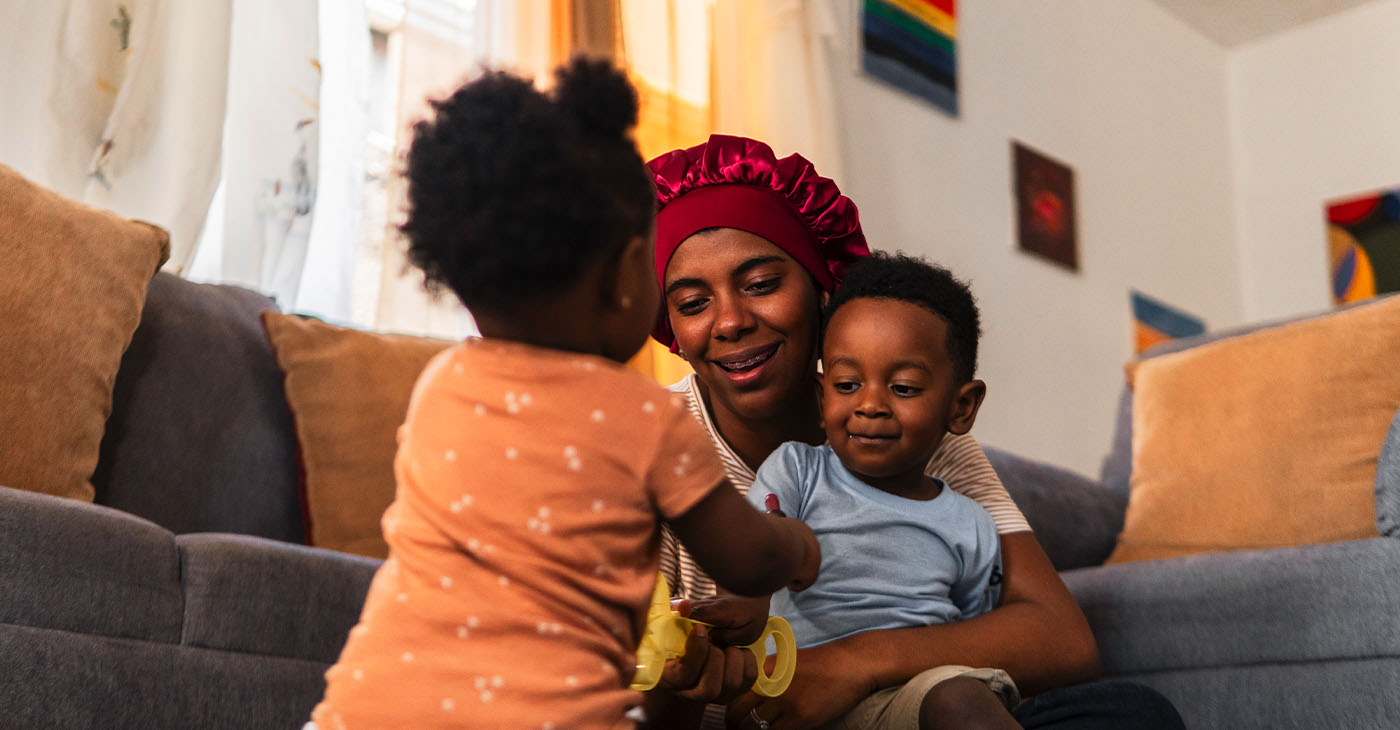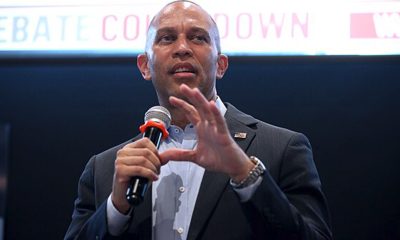Community
Our Black Women and Girls Have Gone Missing but Few Seem to Care
NNPA NEWSWIRE — “To recognize Black girls as magical means defining them as precious, unique and valued. When society recognizes their worth and value, I believe that more attention will be paid to this matter. In addition, it will call for all people to recognize this as an epidemic and cause for action,” said Ginger Lavender Wilkerson, a licensed marriage and family therapist in Los Angeles.
By Stacy M. Brown, NNPA Newswire Correspondent
@StacyBrownMedia
Victoria Shaw, a Black girl approximately 15 years old, went missing Monday, Feb. 11, in West Hartford, Connecticut.
Teandah Slater, Black and also only 15 years old, was reported missing on Thursday, Feb. 7, from Noble Square in Chicago.
Areall Murchinson, a 16-year old Black girl, was last seen near the 200 block of West 111th Place, according to a community alert from Chicago police.
The three are the most recent to make the dubious and heart-breaking list of missing Black girls – particularly teens.
It’s a list that’s quite long and there remains no update on their status.
Recently, the nonprofit Black & Missing Foundation compiled statistics from the FBI which noted that in 2016 alone, 242,295 individuals of color were reported missing in the United States.
A stunning 36.7 percent of those missing were Black teens under the age of 18.
In total, statistics show more than 75,000 young Black Americans are currently missing.
What’s more, officials at the National Center for Missing and Exploited Children’s CyberTipline said they’ve received more than 18.4 million reports, most of which led to apparent child sexual abuse images: online enticement (including “sextortion”), child sex trafficking and child sexual molestation.
Those statistics, and the seeming lack of media interest, have led to cries of racism and neglect, particularly when it comes to Black girls.
It has also led La’Tasha D. Mayes to pen the essay, “Why the Crisis of Missing Black Girls Needs More Attention Than It’s Getting.” Mayes’ March 2017 essay was published at Ebony.com where she noted that an academic study analyzed news coverage of missing children and found that only 20 percent of reported stories focused on missing Black children. This, despite the fact that Black children account for 33 percent of total missing children cases.
“In other words, missing Black youth are grossly underreported in the news. For missing girls, it’s even worse. When Black girls go missing, far too many people don’t know or don’t care,” Mayes wrote.
Many argue that the stories of young Black girls and women who are missing don’t get the same degree of local, national and global attention as that of an Elizabeth Smart or Natalee Holloway.
Smart, a 14-year-old white girl, was kidnapped in 2002 from her home in Salt Lake City, Utah. After an intense search that included relentless media coverage, Smart was rescued by police nine months later and, among other activities, she’s become an analyst for ABC News.
Holloway disappeared in 2005 while on a high school graduation trip in Aruba.
The white Alabama teen’s story drew global media coverage and, although her remains were never found, she was declared dead in 2010.
Many maintain that African Americans aren’t afforded the intense police investigations or the media coverage given to whites that go missing.
“Black girls are magical and should be noticed, uplifted and acknowledged, both within and outside of the Black community,” said Ginger Lavender Wilkerson, a licensed marriage and family therapist in Los Angeles.
“To recognize Black girls as magical means defining them as precious, unique and valued. When society recognizes their worth and value, I believe that more attention will be paid to this matter. In addition, it will call for all people to recognize this as an epidemic and cause for action,” Wilkerson said.
Child Rights activist Katerina Canyon said she’s been researching cases of missing Black girls for years and there are several unknowns, including that many go missing without any witnesses. “This leads me to believe that the kidnappers are either very good at what they’re doing, or the girls left on their own,” Canyon said.
“We need to make sure black girls have readily accessible help from adults in a safe environment such that they do not fall victim to homelessness or trafficking. A lot of times, with the proper interventions, we can prevent black girls from leaving home or falling prey to traffickers,” she said.
The mystery of the disappearances also has heightened since 2016 when Donald Trump won the presidency and the subsequent rise in nationalism and white supremacy.
Some of the disappearances have proven more suspicious than others.
A recent report highlighted the case of Amber Evans, who disappeared in 2015.
Evans had been a key player and driving force behind state and local juvenile justice reform in Ohio – work for which she’d been rewarded when the organization she worked for, the Juvenile Justice Coalition, put her in charge.
In a Facebook post on her first day as executive director, Evans, 28, displayed her track and field medals.
“Ohio is for champions and I used to be something of a track star,” Evans wrote.
“Wearing my old medals before starting day 1 as executive director of the Juvenile Justice Coalition was a nice reminder of that.”
Three weeks later, Evans disappeared.
Her car was found, purse in the trunk, her last known whereabouts, a stop at the pharmacy. Her last known words, a text to her mother saying, “I love you and I’m sorry.”
“There never seemed to be a sense of urgency for our missing African American girls,” said Nashima Harvey, an educator and founder of Girls of Decision, a youth empowerment group that seeks to assist girls in making better choices in all stages of their lives.
“The sad thing that I have encountered has been that many of the young girls I have interacted with on my journey are young women who were former human trafficked young ladies,” Harvey said.
“These women went missing at the ages of 12 to 14 and are now adults living in toxic situations looking for a better life and all seemed to feel no longer welcomed by their family. I am grateful for the opportunity to work with this population, but I do believe that we need to be diligent and outspoken when it comes to saving our girls,” she said.
Alameda County
Seth Curry Makes Impressive Debut with the Golden State Warriors
Seth looked comfortable in his new uniform, seamlessly fitting into the Warriors’ offensive and defensive system. He finished the night with an impressive 14 points, becoming one of the team’s top scorers for the game. Seth’s points came in a variety of ways – floaters, spot-up three-pointers, mid-range jumpers, and a handful of aggressive drives that kept the Oklahoma City Thunder defense on its heels.

By Y’Anad Burrell
Tuesday night was anything but ordinary for fans in San Francisco as Seth Curry made his highly anticipated debut as a new member of the Golden State Warriors. Seth didn’t disappoint, delivering a performance that not only showcased his scoring ability but also demonstrated his added value to the team.
At 35, the 12-year NBA veteran on Monday signed a contract to play with the Warriors for the rest of the season.
Seth looked comfortable in his new uniform, seamlessly fitting into the Warriors’ offensive and defensive system. He finished the night with an impressive 14 points, becoming one of the team’s top scorers for the game. Seth’s points came in a variety of ways – floaters, spot-up three-pointers, mid-range jumpers, and a handful of aggressive drives that kept the Oklahoma City Thunder defense on its heels.
One of the most memorable moments of the evening came before Seth even scored his first points. As he checked into the game, the Chase Center erupted into applause, with fans rising to their feet to give the newest Warrior a standing ovation.
The crowd’s reaction was a testament not only to Seth’s reputation as a sharpshooter but also to the excitement he brings to the Warriors. It was clear that fans quickly embraced Seth as one of their own, eager to see what he could bring to the team’s championship aspirations.
Warriors’ superstar Steph Curry – Seth’s brother – did not play due to an injury. One could only imagine what it would be like if the Curry brothers were on the court together. Magic in the making.
Seth’s debut proved to be a turning point for the Warriors. Not only did he contribute on the scoreboard, but he also brought a sense of confidence and composure to the floor.
While their loss last night, OKC 124 – GSW 112, Seth’s impact was a game-changer and there’s more yet to come. Beyond statistics, it was clear that Seth’s presence elevated the team’s performance, giving the Warriors a new force as they look to make a deep playoff run.
#NNPA BlackPress
LIHEAP Funds Released After Weeks of Delay as States and the District Rush to Protect Households from the Cold
BLACKPRESSUSA NEWSWIRE — The federal government has released $3.6 billion in home heating assistance after a delay that left states preparing for the start of winter without the program’s annual funding.

By Stacy M. Brown
Black Press USA Senior National Correspondent
The federal government has released $3.6 billion in home heating assistance after a delay that left states preparing for the start of winter without the program’s annual funding. The Low-Income Home Energy Assistance Program, known as LIHEAP, helps eligible households pay heating and cooling bills. The release follows a shutdown that stretched 43 days and pushed agencies across the country to warn families of possible disruptions.
State officials in Minnesota, Kansas, New York, and Pennsylvania had already issued alerts that the delay could slow the processing of applications or force families to wait until December for help. In Pennsylvania, more than 300,000 households depend on the program each year. Minnesota officials noted that older adults, young children, and people with disabilities face the highest risk as temperatures fall.
The delay also raised concerns among advocates who track household debt tied to rising utility costs. National Energy Assistance Directors Association Executive Director Mark Wolfe said the funds were “essential and long overdue” and added that high arrearages and increased energy prices have strained families seeking help.
Some states faced additional pressure when other services were affected by the shutdown. According to data reviewed by national energy advocates, roughly 68 percent of LIHEAP households also receive nutrition assistance, and the freeze in multiple programs increased the financial burden on low-income residents. Wolfe said families were placed in “an even more precarious situation than usual” as the shutdown stretched into November.
In Maryland, lawmakers urged the Trump administration to release funds after the state recorded its first cold-related death of the season. The Maryland Department of Health reported that a man in his 30s was found outdoors in Frederick County when temperatures dropped. Last winter, the state documented 75 cold-related deaths, the highest number in five years. Rep Kweisi Mfume joined more than 100 House members calling for immediate federal action and said LIHEAP “is not a luxury” for the 100,000 Maryland households that rely on it. He added that seniors and veterans would be placed at risk if the program remained stalled.
Maryland Gov. Wes Moore used $10.1 million in state funds to keep benefits moving, but noted that states cannot routinely replace federal dollars. His administration said families that rely on medical equipment requiring electricity are particularly vulnerable.
The District of Columbia has already mapped out its FY26 LIHEAP structure in documents filed with the federal government. The District’s plan shows that heating assistance, cooling assistance, weatherization, and year-round crisis assistance operate from October 1 through September 30. The District allocates 50 percent of its LIHEAP funds to heating assistance, 10 percent to cooling, 13 percent to year-round crisis assistance, 15 percent to weatherization, and 10 percent to administrative costs. Two percent is used for services that help residents reduce energy needs, including education on reading utility bills and identifying energy waste.
The District’s plan lists a minimum LIHEAP benefit of $200 and a maximum of $1,800 for both heating and cooling assistance. Crisis benefits are provided separately and may reach up to $500 when needed to resolve an emergency. The plan states that a household is considered in crisis if it has been disconnected from energy service, if heating oil is at 5 percent or less of capacity, or if the household has at least $200 owed after the regular benefit is applied.
The District’s filing notes that LIHEAP staff conduct outreach through community meetings, senior housing sites, Advisory Neighborhood Commissions, social media, posters, and mass mailings. The plan confirms that LIHEAP applicants can apply in person, by mail, by email, or through a mobile-friendly online application and that physically disabled residents may request in-home visits.
As agencies nationwide begin distributing the newly released funds, states continue working through large volumes of applications. Wolfe said LIHEAP administrators “have been notified that the award letters have gone out and the states can begin to draw down the funds.”
#NNPA BlackPress
Seven Steps to Help Your Child Build Meaningful Connections
BLACKPRESSUSA NEWSWIRE — Swinging side by side with a friend on the playground. Sharing chalk over bright, colorful sidewalk drawings. Hiding behind a tree during a spirited game of hide-and-seek. These simple moments between children may seem small, but they matter more than we think

By Niyoka McCoy, Ed.D., Chief Learning Officer, Stride/K12
Swinging side by side with a friend on the playground. Sharing chalk over bright, colorful sidewalk drawings. Hiding behind a tree during a spirited game of hide-and-seek. These simple moments between children may seem small, but they matter more than we think: They lay the foundation for some of life’s most important skills.
Through everyday play, young children begin learning essential social and emotional skills like sharing, resolving conflicts, showing empathy, and managing their emotions. These social skills help shape emotional growth and set kids up for long-term success. Socialization in early childhood isn’t just a “nice-to-have”—it’s essential for development.
Yet today, many young children who haven’t yet started school aren’t getting enough consistent, meaningful interaction with peers. Research shows that there’s a decline in active free play and peer socialization when compared to previous generations.
There are many reasons for this. Children who are home with a parent during the day may spend most of their time with adults, limiting opportunities for peer play. Those in daycare or preschool may have restricted free play, and large classrooms can reduce supervision and social coaching. Some children live in rural areas, are homebound due to illness, have full schedules, or rely on screens to fill their playtime. And for some families, finding other families with young children to connect with isn’t easy.
While these challenges can feel significant, opportunities for connection still exist in every community. Families can take simple steps to help children build friendships, create a sense of belonging, and strengthen social skills. Here are some ideas to get started:
- Storytime sessions at libraries or local bookstores
- Community offerings such as parent-child workshops, art, music, gymnastics, swimming, or sports programs
- Weekly events at children’s museums, which may include art projects, music workshops, or science experiments
- Outdoor exploration, where kids can play with peers
- Local parenting groups that organize playdates and group activities
- Volunteer opportunities where children can participate, such as pet adoption events or packing meals at a food bank
- Classes for kids at local businesses, including hardware, grocery, or craft stores
Some of these community activities are free or low-cost and give kids the chance to build friendships and practice social skills. Parents can also model positive social behavior by interacting with other parents and encouraging their children to play with their peers.
These may seem like small moments of connection, but they can have a powerful impact. Every time your child shares a toy, plays make-believe with peers, or races a friend down the slide, they’re not just playing—they’re learning the skills that build confidence, empathy, and lasting friendships. And it’s good for you, too. Creating intentional opportunities for play also helps you strengthen your own network of parents who can support one another as your children grow together.
-

 Activism3 weeks ago
Activism3 weeks agoOakland Post: Week of November 12 – 18, 2025
-

 Activism2 weeks ago
Activism2 weeks agoIN MEMORIAM: William ‘Bill’ Patterson, 94
-

 Activism3 weeks ago
Activism3 weeks agoHow Charles R. Drew University Navigated More Than $20 Million in Fed Cuts – Still Prioritizing Students and Community Health
-

 Bay Area3 weeks ago
Bay Area3 weeks agoNo Justice in the Justice System
-

 #NNPA BlackPress3 weeks ago
#NNPA BlackPress3 weeks agoThe Perfumed Hand of Hypocrisy: Trump Hosted Former Terror Suspect While America Condemns a Muslim Mayor
-

 #NNPA BlackPress2 weeks ago
#NNPA BlackPress2 weeks agoTrump’s Death Threat Rhetoric Sends Nation into Crisis
-

 #NNPA BlackPress4 weeks ago
#NNPA BlackPress4 weeks agoProtecting Pedophiles: The GOP’s Warped Crusade Against Its Own Lies
-

 #NNPA BlackPress3 weeks ago
#NNPA BlackPress3 weeks agoIn Major Win for Rep. Al Green, Texas Maps Blocked by Federal Judge

























































1 Comment